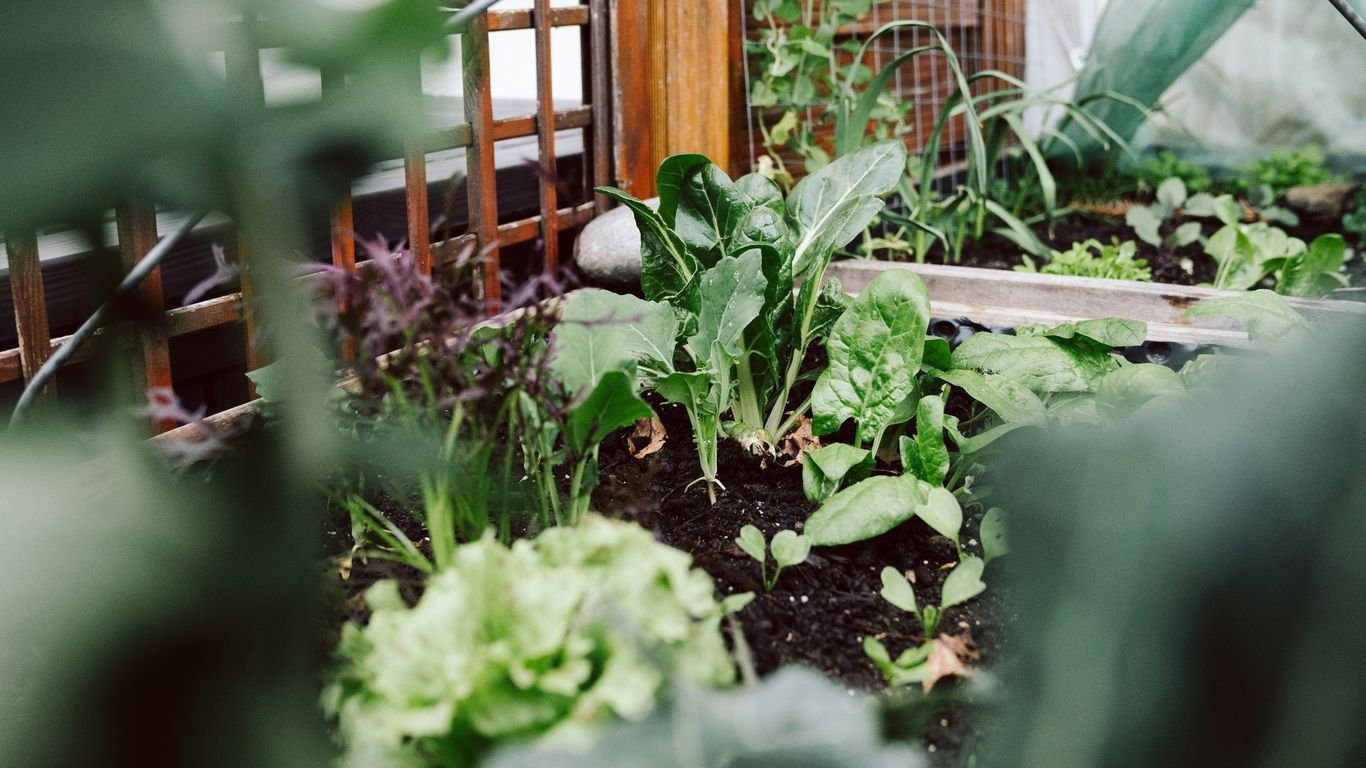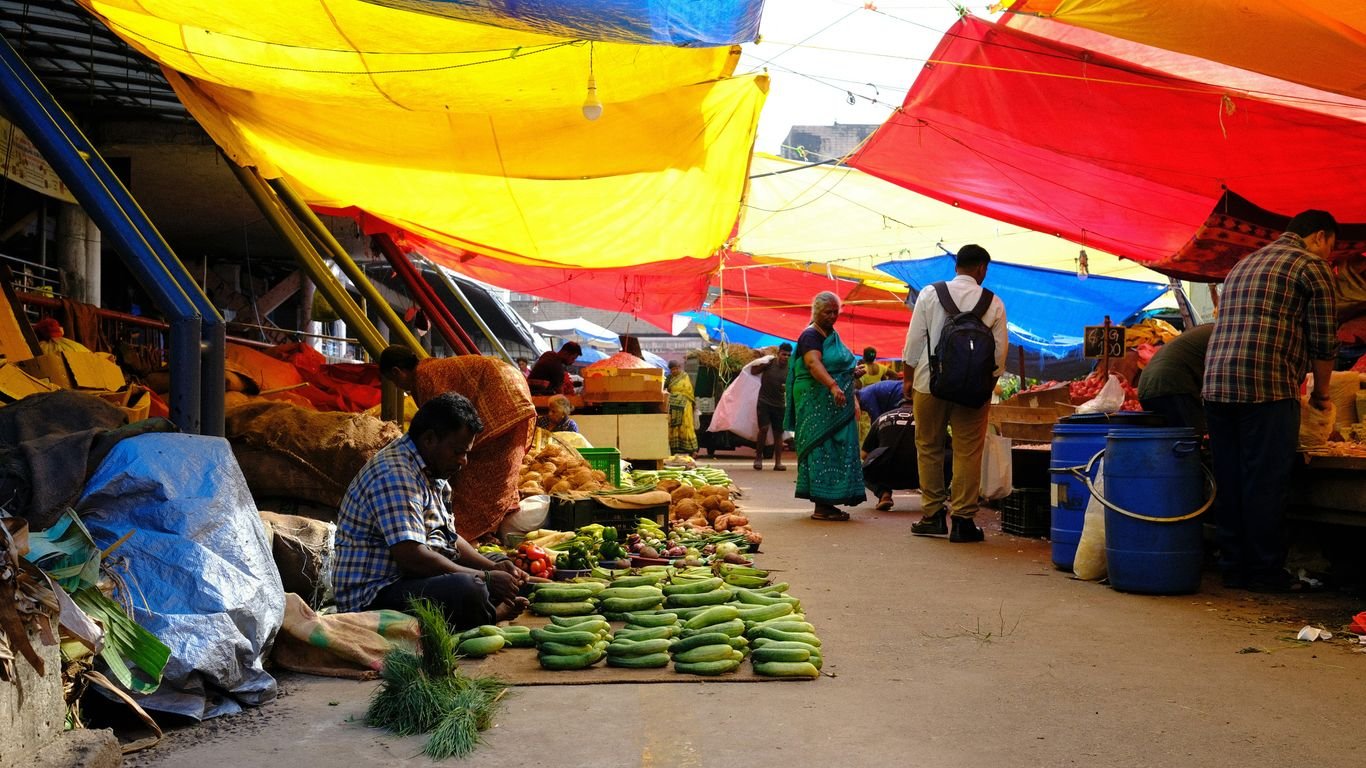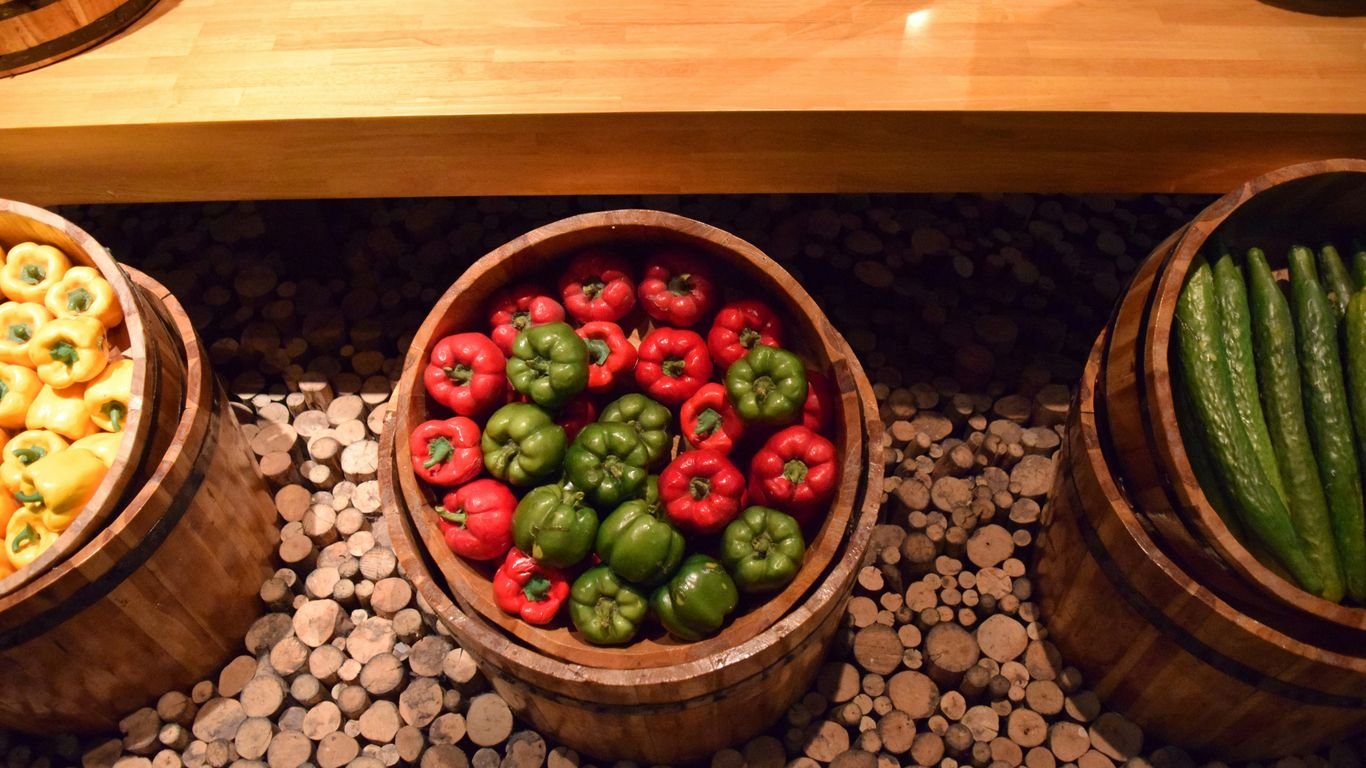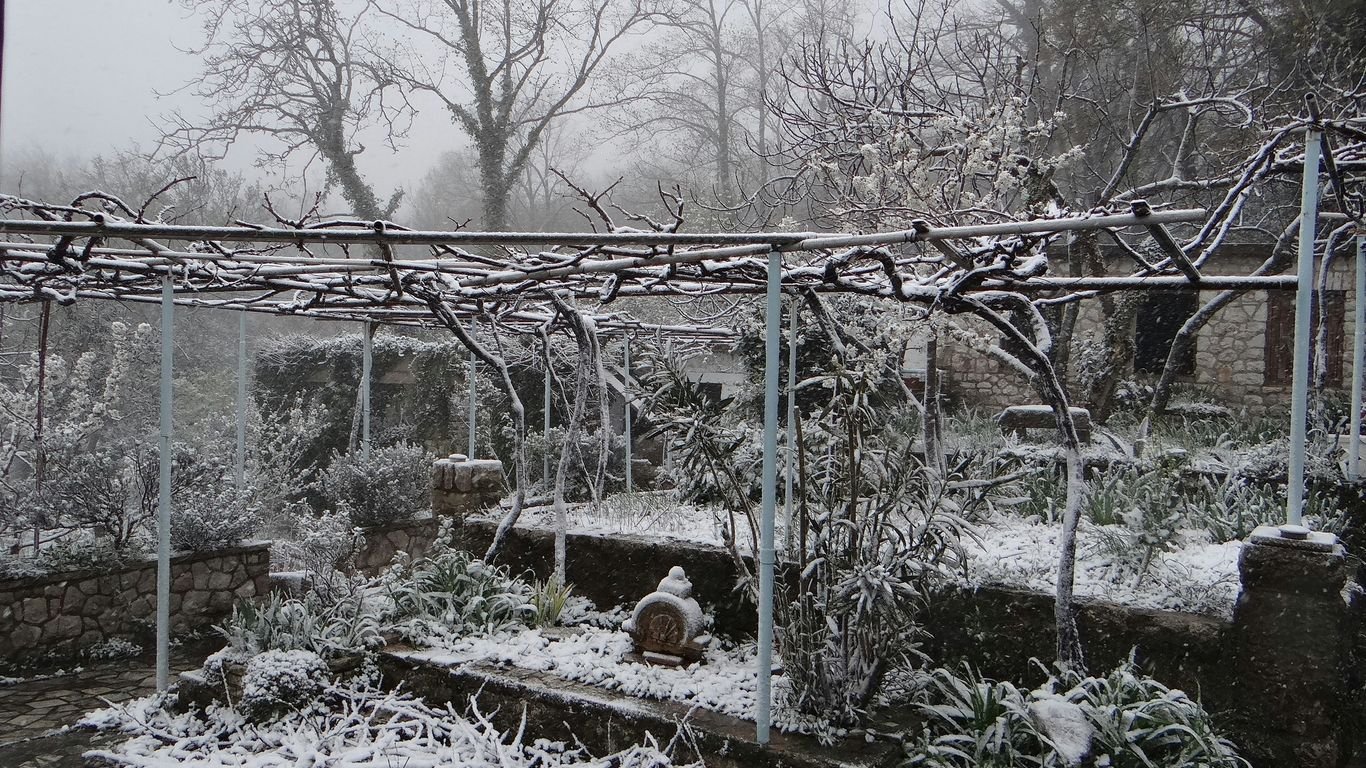Zone 5 Winter Gardening Guide: Crops You Can Grow Under Cover

We’re diving into the world of Zone 5 winter gardening, and honestly, it feels a bit like magic. Most folks pack up their tools when the first frost hits, but we’re going to show you how to keep your garden going. This zone 5 winter gardening guide is all about using simple tricks and picking the right plants to get fresh veggies even when it’s cold outside. It might sound tricky, but we’ve got some ideas that really work.
Key Takeaways
- Zone 5 winter gardening is totally doable with the right approach, focusing on season extension and hardy crops.
- Cold frames, row covers, and hoop houses are your best friends for protecting plants from winter weather.
- Certain greens, root vegetables, and alliums are excellent choices for a Zone 5 winter harvest.
- Timing is everything; plant in late summer and early fall so crops are ready before the deep cold sets in.
- Managing water, snow, wind, and ventilation is key to a successful and healthy winter garden.
Getting Started With Your Zone 5 Winter Garden

So, you’re thinking about extending your gardening season right through the chilly months in Zone 5? We get it! The idea of fresh greens and root veggies when everything else is frozen solid is pretty appealing. It might sound a bit wild, but with the right approach, it’s totally doable. Let’s break down how we can get your winter garden up and running.
Understanding Zone 5 Winter Challenges
Winter in Zone 5 isn’t exactly a walk in the park for plants. We’re talking about freezing temperatures, potential heavy snow, and days with very little sunlight. The ground can freeze solid, making it tough for roots to get water, and harsh winds can really do a number on any exposed plants. Plus, the shorter days mean less energy for photosynthesis. It’s a tough environment, no doubt about it.
The Magic of Season Extenders
This is where the fun really begins! Season extenders are basically our secret weapons against the cold. Think of things like cold frames, row covers, and hoop houses. These structures create a microclimate, trapping warmth from the sun and shielding plants from the worst of the weather. They don’t magically make it summer, but they can raise the temperature enough to keep certain plants alive and even growing. Using these tools is the key to unlocking winter harvests.
Choosing Your First Winter Crops
Not everything can handle the cold, but many things can! We’re looking for plants that are naturally hardy or that can tolerate cooler temperatures when given a bit of protection. Think about greens like spinach, kale, and mache, or root vegetables such as carrots and beets that can be harvested from the ground even after a light frost. We’ll get into more specific recommendations soon, but the general idea is to pick crops that are known for their cold tolerance.
Essential Season Extension Techniques
So, you’re ready to keep that garden going even when the temperatures start to drop? That’s fantastic! We’ve found that getting a handle on a few season extension techniques makes a huge difference in Zone 5. It’s not about building a giant greenhouse (though that’s an option!), but about using smart, often simple, methods to protect our plants.
Building Your Own Cold Frame
Think of a cold frame as a mini-greenhouse for the ground. We’ve built a few ourselves, and they’re surprisingly straightforward. Basically, you’re creating a box with a clear lid. The lid is usually hinged so you can open it up to vent the plants on sunny days or close it down tight at night. The magic here is that the glass or plastic lid traps solar heat, warming the soil and air inside. This allows us to get an earlier start in spring and keep harvesting later into fall. You can build them from scrap wood, old windows, or even straw bales. The key is a sturdy frame and a well-fitting lid.
The Versatility of Row Covers
These are probably our most-used tools for extending the season without major construction. Row covers are essentially lightweight fabric sheets that we drape over our plants. They come in different weights, from thin ones that offer a few degrees of frost protection to heavier ones that can handle much colder temperatures. We love them because they’re so adaptable. You can simply lay them directly over low-growing crops like spinach or lettuce, or you can use hoops to create little tunnels over taller plants. They also help keep pests off and can even provide a bit of shade on scorching hot days. For us, using fabric grow covers has added weeks to our harvest time, especially for hardy greens. You can find more information on how these simple methods work to extend your vegetable harvest.
Hoop Houses: Your Winter Greenhouse
When we want to get serious about winter harvests, hoop houses are the next step up. These are essentially tunnels made from PVC pipes or metal hoops covered with greenhouse plastic. They create a much more controlled environment than row covers. We can grow a wider variety of crops in them, and they offer significant protection from snow, wind, and deep freezes. While they require a bit more effort to set up than a cold frame or row covers, the payoff in terms of extended growing time and crop variety is substantial. They’re like a personal, low-cost greenhouse that can keep your garden productive well into the coldest months.
Top Crops For Zone 5 Winter Harvests
Alright, let’s talk about what we can actually grow and harvest when the temperatures drop in Zone 5. It’s not as limited as you might think! With the right planning and a bit of cover, we can keep fresh food coming.
Hardy Greens That Brave The Cold
When we think winter garden, we’re usually thinking greens. And for good reason! Many leafy greens are surprisingly tough. Spinach is a superstar here. It actually gets sweeter when it’s cold, building up sugars to protect itself. We’ve had great luck with varieties like ‘Giant Winter’ and ‘Winter Bloomsdale’. Just get them planted in late summer or early fall, and they’ll be ready for us.
Kale is another champion. It can handle serious frost, and the flavor often improves after a cold snap. We like to grow ‘Lacinato’ (also called Dinosaur kale) and ‘Red Russian’ for their hardiness and taste. They can pretty much hang out in the garden until we need them, especially with a little protection.
Don’t forget about mache, sometimes called corn salad or lamb’s lettuce. This little green is incredibly cold-tolerant and perfect for salads. We sow it in late summer, and it provides tender leaves all winter long, especially under row covers or in a cold frame. It even self-seeds, so we often have it popping up year after year.
- Spinach: Gets sweeter with cold, easy to grow.
- Kale: Very hardy, flavor improves with frost.
- Mache: Cold-tolerant, great for salads, can self-seed.
We’ve found that planting these greens from August through October gives us the best chance for a good harvest from fall right through to spring, with slower growth during the coldest months.
Root Vegetables That Keep On Giving
Root crops are fantastic for winter because they can often be left in the ground and harvested as needed, or stored easily. Carrots are a great example. If we sow them in early August, we can harvest them through the fall and even into early winter. Varieties like ‘Napoli’ and ‘Mokum’ are good choices for this. They get super sweet in the cold, and their bright color is a welcome sight.
Turnips are also a good bet. We can direct seed them in the fall, and they grow relatively quickly. ‘Hakurei’ is a favorite for its mild flavor and tender roots. We just need to make sure we plant enough to last, as they won’t hold over into spring in the garden.
- Carrots: Sow in early August for fall/winter harvest; varieties like ‘Napoli’ are good.
- Turnips: Direct seed in fall; ‘Hakurei’ is a reliable choice.
Alliums For A Winter Kick
Onions and their relatives can add a nice bit of flavor to our winter meals. Scallions, or bunching onions, are surprisingly hardy. We can plant them in the fall and harvest them throughout the winter, especially if they’re in a protected spot like a low tunnel. ‘Evergreen Hardy White’ is a variety that lives up to its name.
Leeks are another option, though they take a bit longer to mature. Planting them earlier in the season allows them to establish well before the deep cold sets in. They can then be harvested throughout the winter months. We tend to plant these in lower tunnels to save space in our main hoophouses.
Planting And Care In Colder Months
Getting your winter garden set up and keeping it going requires a slightly different approach than our summer growing season. We need to think about timing, watering, and how to protect our plants when the really cold weather hits.
Your Zone 5 Winter Planting Schedule
Timing is everything, especially in Zone 5. We want to get our cold-hardy crops established before the deep freeze sets in. Think of late summer and early fall as our prime planting window for winter harvests. This is when the soil is still warm enough for seeds to germinate well, giving young plants a good start before growth slows down.
- Late Summer (August-September): This is our main window for direct sowing many cold-season crops. We’re aiming for plants that can grow through the fall and be ready for harvest in early winter. Succession planting is a good idea here to ensure a continuous harvest.
- Early Fall (September-October): If you missed the late summer window or want to add more, you can still plant some quick-maturing greens or root vegetables. These might need a bit more protection, like a cold frame or row covers, to make it through.
- Late Fall (October-November): For crops already established, this is when we focus on protection. We might be tucking them in with mulch or ensuring our season extenders are ready.
Watering Wisely In Winter
Watering in winter is tricky. Plants grow much slower, so they don’t need as much. Overwatering is a common mistake that can lead to root rot or freeze damage. The soil should be kept lightly moist, not soggy. We usually find that watering once every week or two is plenty, but it really depends on your specific setup and the weather.
- Check the soil moisture by sticking your finger a couple of inches down. If it feels dry, it’s time to water.
- Water in the morning on days when the temperature is above freezing. This gives the plants and soil time to absorb the water before it gets too cold.
- Avoid overhead watering if possible, as this can lead to ice forming on leaves.
Protecting Plants From Extreme Cold
When those really frigid nights arrive, we need to give our winter garden a little extra help. This is where our season extension tools really shine.
We’ve learned that a little bit of effort in protecting our plants can make a big difference in what we can harvest. It’s all about layering protection, starting with the plants themselves and building up with covers and mulch.
- Mulching: A thick layer of straw or shredded leaves around the base of plants helps insulate the soil and protect roots from hard freezes. For root vegetables still in the ground, a good layer of mulch can keep them from freezing solid.
- Row Covers: Lightweight frost blankets can be draped over plants on particularly cold nights. They add a few degrees of protection and can be easily removed on warmer days.
- Cold Frames and Hoop Houses: These structures are our best friends for serious cold protection. They trap solar heat during the day and keep the plants cozy at night. We often add an extra layer of protection inside these structures on the coldest nights, like an old blanket or more row cover material.
Managing Your Winter Garden Environment

Keeping our winter garden thriving means we need to pay attention to what’s happening inside our season extenders. It’s not just about planting and forgetting; we’ve got to be active managers, especially when the weather outside is doing its own thing. Think of it like being a good parent to our plants – they need the right conditions to grow, even when it’s cold.
Dealing With Snow And Wind
Snow can actually be a good thing for our gardens, acting like a natural blanket that insulates the soil and plants. However, too much snow, especially when it piles up heavily on hoop houses or cold frames, can cause structural damage. We need to gently brush off excess snow from the covers. For wind, especially in Zone 5, it can be brutal. We should make sure our structures are well-anchored and consider windbreaks if needed. Sometimes, just reinforcing the frame with extra stakes can make a big difference. We also want to avoid using rock salt on nearby paths, as it can easily get into our garden soil and harm the plants. Opting for sand or calcium chloride-based de-icers is a much better choice for our garden’s health.
Ventilation For Your Covered Garden
This is super important, maybe even more than we realize at first. Even on chilly days, the sun can heat up a covered space surprisingly fast. If the temperature inside climbs too high, say above 50-60°F, our cool-season crops can get stressed. We need to open up the ends of our hoop houses or lift the lids on cold frames to let that warm, moist air escape. Doing this on milder days, when it’s at least in the 40s outside with a light breeze, is ideal. It helps prevent mold and keeps the plants happy. Just remember to close everything up tight before the sun goes down if the temperature is expected to drop significantly. Proper ventilation prevents excess moisture and keeps our plants from overheating.
Monitoring Soil Moisture
Watering in winter is different. Plants grow slower, so they don’t need as much. We need to check the soil moisture regularly, but not too often. A good rule of thumb is to stick your finger a couple of inches down. If it feels dry, it’s time to water. If it’s still moist, hold off. Overwatering is a common mistake in winter and can lead to root rot. We should water in the morning on days when temperatures are expected to stay above freezing, allowing any excess moisture to drain away before nightfall. It’s also a good idea to make sure our containers and beds have good drainage to begin with. We can even use a simple soil moisture meter if we’re unsure. Keeping an eye on this helps us avoid problems before they start, and it’s key to successful winter harvests.
We’ve found that a consistent watering schedule, even if it’s less frequent, is better than sporadic drenching. It helps the plants establish a steady growth pattern and reduces the risk of shock from sudden wetness or dryness.
Wrapping Up Our Winter Garden Adventure
So there you have it! We’ve shown that even in Zone 5, with a little planning and some simple covers like hoop houses or cold frames, we can keep our gardens going through the chilly months. It’s pretty cool to think about harvesting fresh greens and roots when everything else is covered in snow. Don’t be afraid to give it a try, even if it’s just with a few hardy crops to start. We learned that timing is key, and picking the right plants makes all the difference. Here’s to enjoying our own homegrown veggies all winter long!
Frequently Asked Questions
What are the biggest challenges we face when winter gardening in Zone 5?
In Zone 5, we have to deal with really cold temperatures that can drop way below freezing. We also get snow and strong winds that can damage our plants and garden structures. The shorter days mean less sunlight, which slows down plant growth. It’s a tough environment, but with the right tools, we can still grow food!
How do season extenders help our winter garden?
Season extenders are like little shields for our plants. Things like cold frames, row covers, and hoop houses trap heat from the sun and protect plants from frost, wind, and snow. They create a warmer, safer space, allowing us to grow crops that wouldn’t normally survive the winter outdoors.
What are some of the easiest crops for us to grow in Zone 5 during winter?
We should focus on hardy greens like kale, spinach, and mache (also called corn salad). Root vegetables such as carrots and radishes can also do well, especially if mulched. Hardy alliums like scallions are great too. The key is picking plants that naturally tolerate cold.
When should we plant our winter crops in Zone 5?
It’s best to plant our winter crops in late summer or early fall, around August and September. This gives them enough time to grow and get strong before the really cold weather hits and the days get short. We want them to be harvest-ready before winter truly sets in.
How often should we water our plants in a winter garden?
We need to water much less in the winter because it’s cooler and less water evaporates. We should only water when the soil feels dry to the touch, and even then, just a little bit. Overwatering can be harmful when plants aren’t growing much.
What should we do if we get a lot of snow or strong winds?
For snow, we need to carefully brush it off the top of our hoop houses or cold frames so the structure doesn’t collapse and so sunlight can still get in. For strong winds, we must make sure our covers are secured tightly to the frames and sealed at the bottom with things like bricks or soil to prevent them from blowing away.






